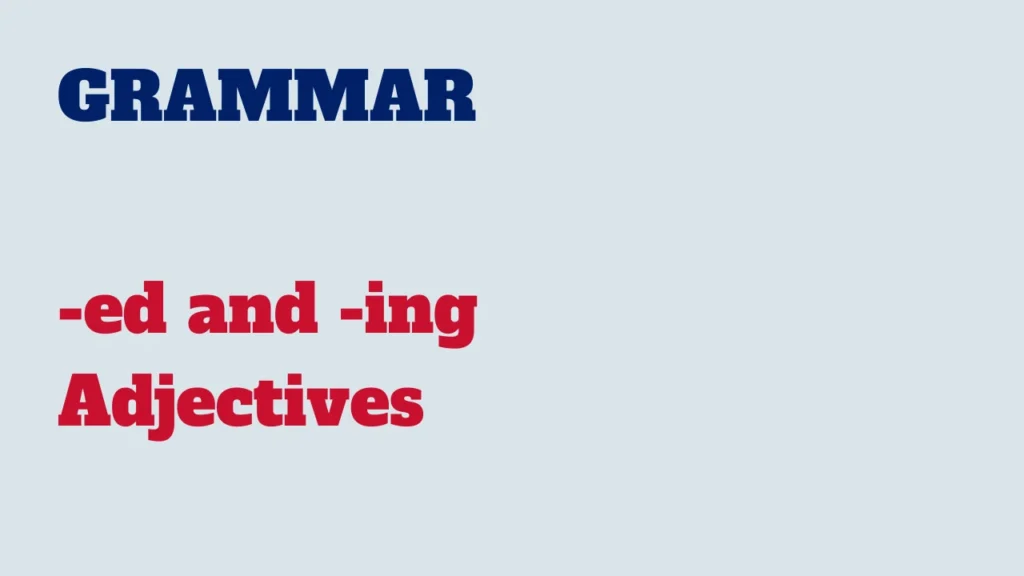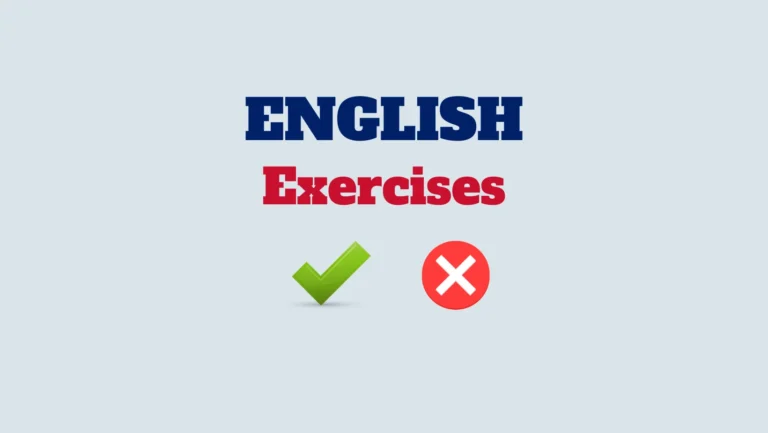Understanding the difference between –ed and –ing adjectives is essential for expressing emotions, reactions, and characteristics in English.

In this lesson, we will explore the usage of –ed and –ing adjectives, their meanings, and how to incorporate them into sentences.
-ed adjectives:
Formation:
Add –ed to regular verbs.
Usage of -ed adjectives:
–ed adjectives describe emotions or states resulting from an external influence or action.
Examples:
I feel excited about the upcoming trip.
She was surprised by the unexpected news.
Examples of -ed adjectives:
Interested, fascinated, annoyed, relaxed, surprised, etc.
-ing adjectives:
Formation:
Add –ing to the base form of the verb.
Usage -ing adjectives::
–ing adjectives describe the characteristics or features of a person, thing, or situation.
Examples:
The movie was boring; I fell asleep.
He is an interesting speaker.
Examples of -ing adjectives::
Boring, interesting, exciting, relaxing, surprising, etc.
Key differences:
-ed adjectives:
Indicate a person’s feelings or reactions.
Example:
I am interested in learning new languages.
-ing adjectives:
Describe the qualities or features of a person or thing.
Example:
The documentary was interesting; it covered various topics.
Placement in sentences:
-ed adjectives:
Typically come after linking verbs (be, feel, seem) or appear in the predicate.
Example:
She seemed surprised by the news.
-ing adjectives:
Can be used before nouns or after linking verbs.
Example:
It was a challenging task.
Common mistakes to avoid:
Confusing the functions:
Incorrect: The concert was amazed.
Correct: The concert was amazing.
Understanding the distinction between –ed and –ing adjectives is vital for expressing feelings, reactions, and characteristics accurately. Whether conveying personal emotions or describing external qualities, choosing the appropriate adjective enhances the clarity and impact of your communication. Practice using both types of adjectives in various contexts to strengthen your language skills. Happy learning!



